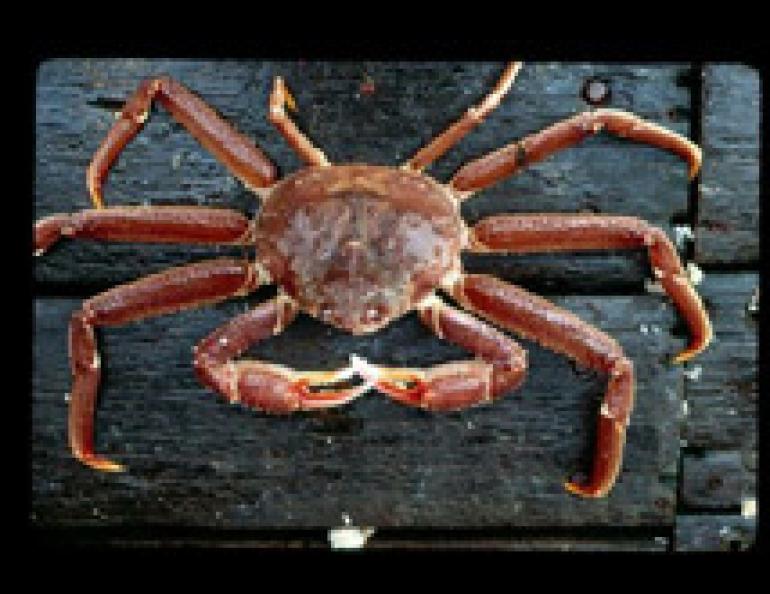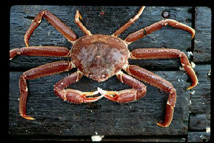
Northeast wind favors Bristol Bay crabs
Crab fishermen in Alaska’s Bristol Bay pulled up 40 million pounds of Tanner crab in 1990. Ten years later, fishermen harvested zero pounds of Tanner crab in Bristol Bay. Scientists have recently discovered that the booms and busts of Tanner crab populations may depend on which way the wind blows.
Tanner crabs live on the continental shelf, the floor beneath Alaska’s oceans that slopes into the abyss the farther one sails from the Alaska mainland. Tanner crabs live about 14 years, resemble red spiders with ten legs, and are one of three types of crab that make up the bulk of Alaska’s shellfish industry.
As with their relatives the snow crab and red king crab, Tanner crabs are prone to sudden disappearances. Red king crabs experienced the most famous population crash in the early 1980s, when—after years of good crab numbers that enabled boat captains to bring home $150,000 and crew members $80,000 in a season that lasts just a few weeks—the scarcity of crabs forced Fish and Game to close the fishery.
People have blamed the decline of crabs on overharvesting by humans and other predators, but scientists could never pin down the reasons. After the Tanner crab population in the Bering Sea collapsed in 1996, a few University of Alaska scientists gathered a group of crab experts from Alaska, British Columbia and Washington to brainstorm.
Al Tyler, a professor at the School of Fisheries and Ocean Sciences at the University of Alaska Fairbanks, is one of those scientists. For two days, he and his colleagues studied the secret lives of Tanner crabs for clues to why they boom and bust. They looked at the abundance of fish that eat young Tanner crabs—sockeye salmon and Pacific cod—but crabs thrived despite these predators. Nor did they find overharvesting by commercial fisherman to be a problem.
With those two obvious causes out of the equation, the researchers turned to the physics of the ocean. Two of the scientists, Gregg Rosenkrantz and Gordon Kruse of the Alaska Department of Fish and Game, saw a correlation between wind direction and good crab years. When winds blew through Bristol Bay from the northeast when crab larvae were developing in spring, a good number of Tanner crabs that grew from those larvae survived to adulthood. The researchers think the northeast winds may affect ocean currents in a way that keeps free-floating crab larvae offshore, where they settle over their preferred habitat of fine mud and sand. When winds from any other direction prevail, Tanner crab larvae end up in the shallow, rocky zone closer to the shoreline of Bristol Bay; a habitat more suited for red king crabs than Tanner crabs.
Tanner crabs in Bristol Bay have other obstacles in addition to breezes that don’t come from the northeast, the researchers found. The Bering Sea cold pool is a colossal blob of frigid bottom water—sometimes colder than 0 degrees C—that remains in the Bering Sea during the summertime. Tanner crab larvae that have the misfortune to cling to their mothers’ bellies within the cold pool do not develop as well as Tanner crabs that avoid the phenomenon. Years that feature large cold pools—which vary in size depending on sea ice conditions the year before—have corresponded with low crab populations seven years later, when the Tanner crabs are large enough to harvest.
By finding two physical factors that affect Tanner crabs in Bristol Bay, scientists may be able to predict the future success of crab fishermen in the area, who have celebrated in good crab years and suffered during the crashes.
“That kind of boom and bust fishery is very hard on any fleet of boats,” Tyler said, “You can’t do anything with a large crab vessel but fish for crab.”





